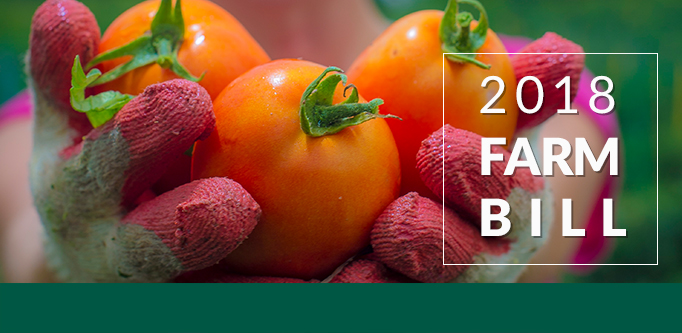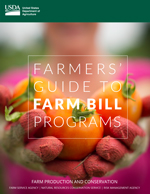
On Nov. 16, 2023, President Biden signed into law H.R. 6363, the Further Continuing Appropriations and Other Extensions Act, 2024, which extended the Agriculture Improvement Act of 2018, more commonly known as the 2018 Farm Bill. This extension allows authorized programs to continue through Sept. 30, 2024.
The 2018 Farm Bill provides support, certainty, and stability to our nation’s farmers, ranchers, and land stewards by enhancing farm support programs, improving crop insurance, maintaining disaster programs, and promoting and supporting voluntary conservation.
Through the 2018 Farm Bill, RMA, through Federal Crop Insurance Corporation (FCIC) will:
- Provide more risk management options for farmers and ranchers;
- Make crop insurance more affordable for veteran farmers;
- Continue the growth of the crop insurance program;
- Provide avenues to expand farm safety net options for specialty crop producers;
- Ensure increased program integrity.
Find a crop insurance agent to discuss available options for your farm or ranch.
2018 Farm Bill: What’s New for the Risk Management Agency (PDF, 116KB)
 | Farmers’ Guide to 2018 Farm Bill Programs (PDF, 854KB) - This brochure provides an at-a-glance view of programs and assistance available to farmers and ranchers from FSA, NRCS and RMA, through the 2018 Farm Bill. Translated versions:
|
Highlights
- Expanded Options for Graze and Grain
- Multi-County Enterprise Unit
- Native Sod
- Specialty Crops
- Industrial Hemp
- Supplemental Coverage Option (SCO) and Stacked Income Protection Program (STAX)
- Underserved Producers
The 2018 Farm Bill also provides:
Expanded Options for Graze and Grain
Producers may now purchase separate policies for crops that have an intended use of grazing and grain. The 2018 Farm Bill repeals the prohibition on catastrophic coverage for crops and grasses used for grazing.
Multi-County Enterprise Unit
The Farm Bill affirmed additional policy allowances for including acreage in an adjoining county as a single enterprise unit. The law gives RMA flexibility to update the provisions over time with additional situations as usage increases.
See Manager’s Bulletin MGR-18-017 and Multi-County Enterprise Unit fact sheet for more information.
Native Sod
Native Sod guidelines will be posted soon to inform producers about new rules that impact crop insurance benefits when native sod is tilled in Iowa, Minnesota, Montana, Nebraska, North Dakota, and South Dakota.
Penalties for native sod on land tilled between the 2014 Farm Bill and the current Farm Bill was segmented. Native sod acreage tilled after the 2018 Farm Bill will have reduced benefits for any insurable crop instead of just an annual crop. Reductions will apply for four cumulative crop years on the acreage when a crop is insured, with a limitation only during the first 10 years after initial tillage, and limits penalties for newly tilled land on native sods to four cumulative years.
Specialty Crops
Specialty crops include fruits and vegetables, tree nuts, dried fruits, and horticulture nursery crops. A Specialty Crop Liaison in each RMA Regional Office will provide localized expertise to the Specialty Crop Coordinator. RMA will submit to the FCIC Board at least one insurance product covering both a new and current specialty crop, and expand a current insurance product for at least one specialty crop per year.
Industrial Hemp
The 2018 Farm Bill allows FCIC to offer policies for industrial hemp. At present, there is no coverage available for hemp, though hemp production will not cause a farm to be ineligible for the Whole-Farm Revenue Protection policy. See Managers Bulletin MGR-19-002.
Supplemental Coverage Option (SCO) & Stacked Income Protection Program (STAX)
The 2018 Farm Bill did not directly change the Supplemental Coverage Option (SCO) or Stacked Income Protection Program (STAX) products. However, the Farm Service Agency’s Agriculture Risk Coverage (ARC) and Price Loss Coverage (PLC) program changes impact both due to existing prohibition for multiple programs. If producers elect ARC, they cannot purchase SCO coverage for that crop on that Farm Service Agency farm. If producers enroll in ARC or PLC for seed cotton, they cannot purchase STAX coverage. RMA will issue more guidance on rules for these circumstances in the future.
How to Apply
Crop insurance is sold and delivered solely through private crop insurance agents. A list of crop insurance agents is available at all USDA Service Centers and online at the RMA Agent Locator.
